Here’s the power of generative AI in writing.
“Generative AI” means that the AI (or program, or software that humans have written) will learn how to do something on its own, by humans feeding it with data and writings that the AI is required to learn.
With a large enough dataset, the AI will be able to spot patterns and teach itself how to do the necessary — and GENERATE new writings based on what it knows.
Hence the term “Generative AI”.
In this example, I became an author of children’s books.
I have never written books for children before, but with ChatGPT as my ever-loyal and eager-to-please assistant, I don’t have to.
I started the “writing” at 9.15pm just now by simply asking ChatGPT to give me the plot of a story involving a child and a dragon.
There are other asks (or “prompts” or instructions) that followed the first one, which is basically asking for an outline of the chapters, and then asking ChatGPT to write out the full chapters one by one.
That’s it.
And the entire book was finished by 9.30pm — just 15 minutes later.
I have not read it in full, just skimmed through it – but even with the skimming it’s coherent and can provide some mild entertainment to my readers if they’re into children’s stories.
This means that It’s not edited, although I’m not sure if it needs to be edited in any way.
It also doesn’t have any images as I’m just illustrating the writing capability of ChatGPT here.
I now have a book that is more than 6,000 words in total — complete with a plot summary, an outline of the chapters, and the full chapters themselves with dialogs.
All in just 15 minutes.
All I need to do is to delete the plot summary, and the synopsis of each chapter.
I will add the copyright and other usual pages, which will take a few minutes to do.
If I were to add images (I will just go to stock images places or generate a few with AI), it’ll probably take me another hour or so.
I’ll then copy all the text from ChatCPT into Word, adjust the formatting, design a book cover using ready book templates in Canva.com. This will take another 1 hour if I’m slow.
Then I’ll add the book cover and images to the pages in the book, make it show the page numbers automatically, format it a bit — and I’m done.
The next step is to simply need to convert the entire Word doc into PDF by saving it as a PDF file. This takes a few seconds.
I’ll attach the PDF after below this post for you to see how it looks like.
Is it the best book ever written for children?
No, not even close.
But it’s probably better than any story I can think of and write on my own.
And with better “prompting” – which means better instructions from me to ChatGPT on what to write and how, with some sub-plots, the quality will be better, and the word-count and pages will increase in number.
Current writers and authors will certainly benefit from ChatGPT’s power, to augment or enhance what they have already written or have trouble progressing. Writer’s block is a real thing and can be quite frustrating as writers write for a living. WIth ChatGPT and other AI tools like it, writer’s block is a thing of the past.
This “book” of mine may even be sold as a downloadable book in Amazon. I don’t have the time to do this yet, but if I do find the time, I may just try it out and sell it for, say, USD0.99 or USD1.99.
Despite Amazon’s warning that it will not allow AI-generated books to be sold on its site — it’ll be interesting to see how it can detect such books.
After all, the most effort I have put in to write this book is just 2 hours in total. If it doesn’t get approved, that’s fine — I would have used that 2 hours on watching some TikTok videos, or replying to Whatsapp group messages every day.
But if Amazon can’t really detect my book as an AI-generated one, and if I want to really make this work, I can “write” a series of books of Ethan and his flying dragon’s adventures.
With Generative AI, I can churn out an unlimited number of books by the hour. I can even ask the AI to give me suggestions on some plots to write about, ask it to introduce some “twists” to make the plot more interesting, and end every chapter with a cliffhanger to make the reader turn the page to find out what happens next.
And so can you.
Note that AI will replace a lot of jobs and tasks that require a human to do it currently (like writing) — so either be replaced, or use it wisely and have the upper hand.
Here are some of the prompts I used:

I didn’t like the title it generated for me, so I asked for more:
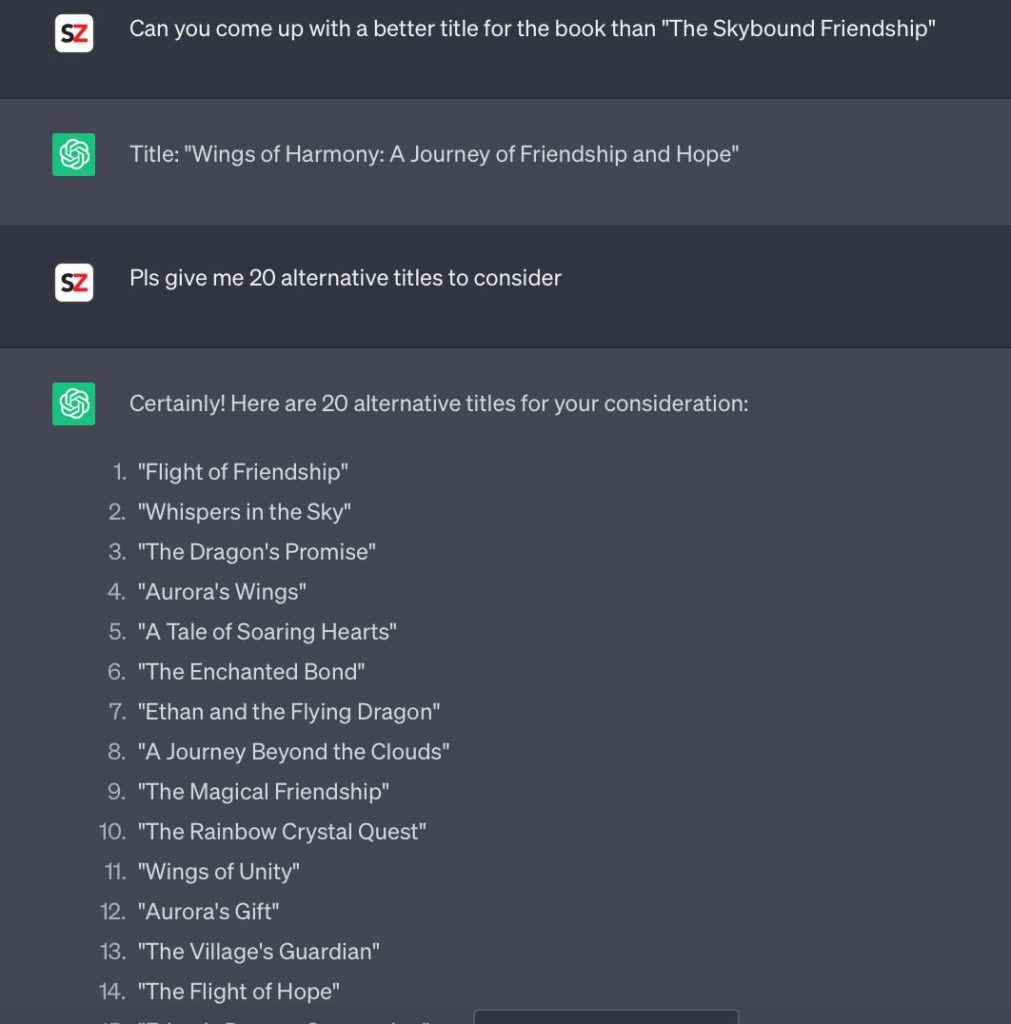
I chose 2 titles from the additional suggestions to make a single one — that of No.7 and No.10

With the plot written and I’m satisfied with it, I now asked it to write the chapters for the plot.
If I’m not satisfied with the plot, I can ask ChatGPT to rewrite it.
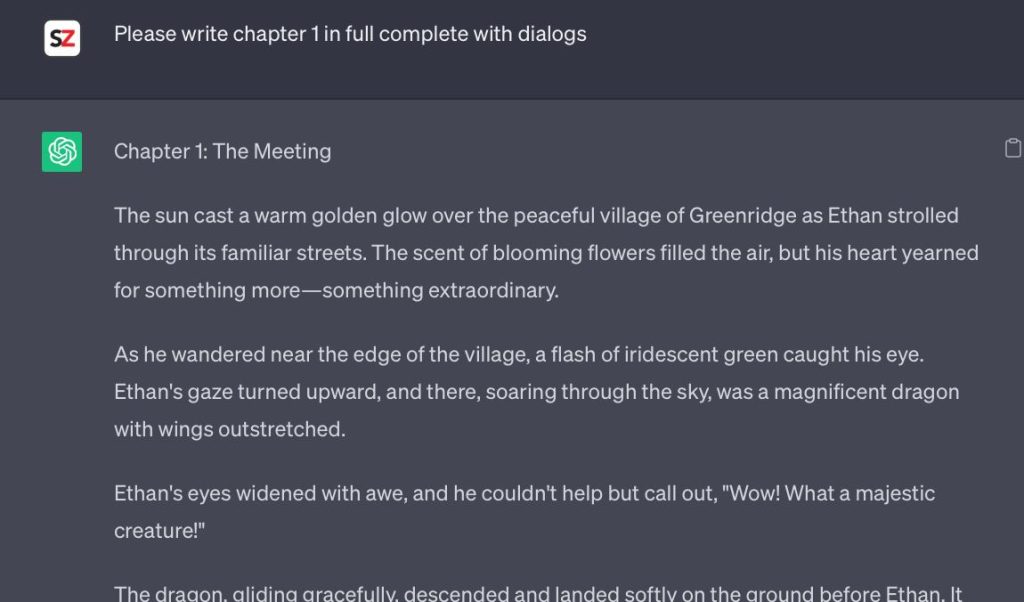
Once the chapters are written, and I’m satisfied with them, I now asked ChatGPT to write each chapter in full. Note that I want dialogs to be written also, as this is how stories are told. If you don’t give this instruction, ChatGPT will write the chapter without any.
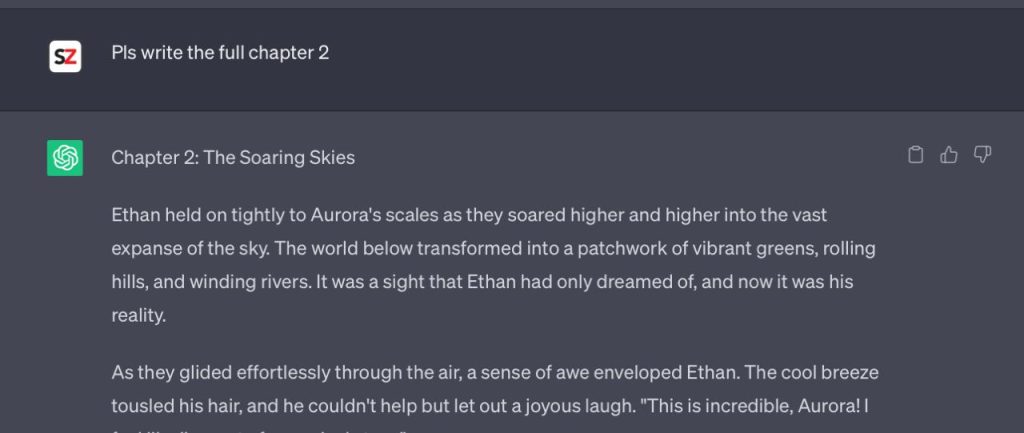
Once Chapter 1 is written, I now ask it to write Chapter 2. Note that I have not asked for dialog in this chapter but ChatGPT remembers my instructions for Chapter 1 and included some dialog for Chapter 2 as well.
I continue this way, chapter by chapter. Don’t ask ChatGPT to write all 10 chapters in one prompt, as it has a word limit and it may freeze up and you have to do this all over again.
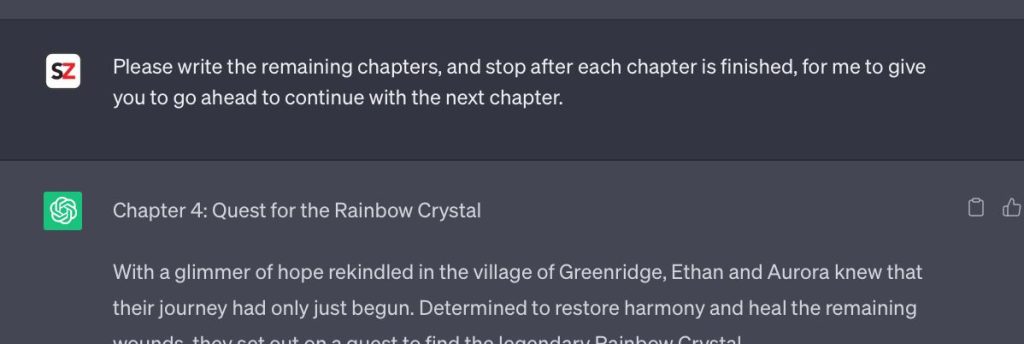
This prompt added another instruction for ChatGPT to get my go ahead for the next chapter. I do this because I want to read what is written to see if it’s ok, and also to get ChatGPT to interact with me. This 2-way interaction adds some fun to an otherwise one-way “conversation”.

See the last line — ChatGPT is asking me if i would like to continue with the next chapter. A simple “yes” and it’ll go on its merry way.

For some reason, ChatGPT forgot to include dialog in Chapter 4, so I asked it to write it with dialog.

All chapters written, so I asked it to write the epilogue.
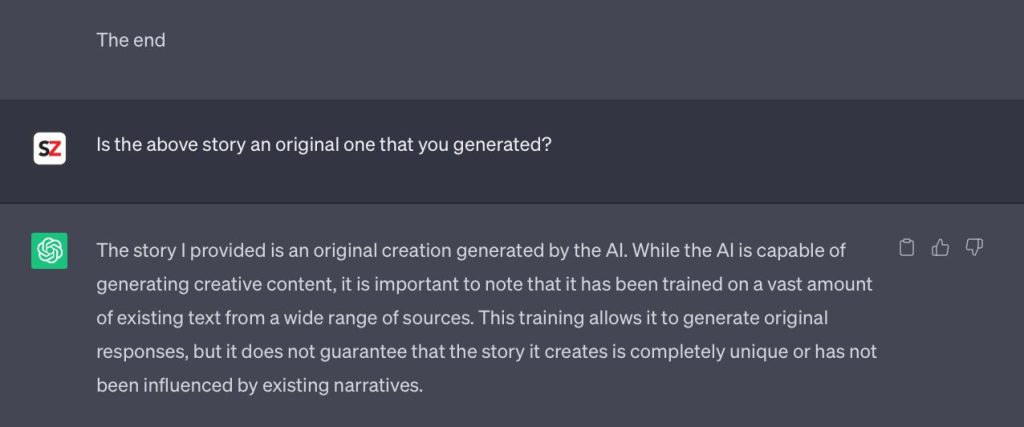
And just to clarify with ChatGPT, I asked if the story written is an original one. It said it is, and gives the reason why (it’s generative). It admits that the plot isn’t necessarily original, but I don’t need a plot to be original, most plots have been written about before anyway.
What’s most impotant is that the writing is original, and it said it is.
We can of course check it by copying some paragraphs in the book and pasting it into google to search for some writings that match those sentences exactly and in that order.
Or we can go to https://plagiarismdetector.net to check
So my “work” consists of just prompting ChatGPT to do the work for me.
Prompting is the next in-demand skill that everyone must learn — or else you’ll be left behind those who do know how to prompt AI to do their bidding.
You can do this with ANY GENRE of books. Romance, adventure, action-adventure, comedy, etc.
You can also generate books about self-help, life improvement, wealth managment, etc.
Although if you’re writing about non-fiction like self-help stuff, if you don’t add your own real-life experiences to them, you won’t be able to differentiate your books from the thousands of similar books.
So if you want an easier way to do this, stick with fiction, because fiction can be generated a million ways and still be different from each other due to the different characters, circumstances, time, and dialogs those characters speak to each other. Which means you don’t have to do much work other than prompting.